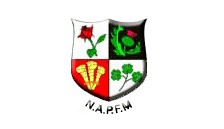The police’s policy on vehicle procurement is lacking leadership and needs ‘a joined up approach’, according to the head of the Inspectors Central Committee of the Police Federation.
Speaking at the National Association of Police Fleet Managers (NAPFM) conference, Alan Jones, who specialises on roads policing and in “fighting to ensure roads policing officers get a voice”, said there needed to be a 'single lead' on vehicle procurement from the Association of Chief Police Officers (ACPO) rather than decisions being left to the discretion of 43 individual Chief Constables.
“Why is there so much difference and variance between what one fleet manager acquires and fits, balanced against another?” he asked.
“I know there are national contracts for the supply of oil, tyres and glass disposal, but the variables in other regards just don’t add up.”
Mr Jones suggested that police vehicles and equipment need to be set against a national standard of excellence – a view which is supported by the Police Federation.
At the Federation’s national conference in May 2007 members voted 92% in favour of progressing improvements to national vehicle consistency.
Despite this support, Mr Jones said that the Federation remains “hugely disappointed and uninspired by the lack of ACPO engagement with a project that offers so much potential and could deliver so many benefits”.
Efficiency would be one of the main benefits of a national approach, according to Mr Jones.
However, ACPO said there is already a procurement framework in place.
“The majority of police vehicles are purchased through framework arrangements managed by the NAPFM on behalf of ACPO procurement and in conjunction with the National Police Improvement Agency (NPIA),” said the ACPO lead for fleet management, Lynne Potts.
“These arrangements allow forces to purchase vehicles which have been tested for police use to relevant and appropriate standards in a consistent way.
"ACPO is fully engaged with and remains committed to this work.”
But Mr Jones said even when if a national standards framework was in place, there would still be many areas that would need special attention.
Vehicle speed is 'still a thorny subject' and there is the lack of consistency on high visibility markings for blue-light vehicles, he said.
“We still have a kaleidoscope of colour for police markings.”
















Login to comment
Comments
No comments have been made yet.